
At some point, most cooks have dried out a roast, burnt a chicken or under-baked a pan of brownies. Cooking is a learning process that requires a determination to not just file away recipes, but to also mentally file away lessons learned. It may help to marshal this optimistic spirit if you’ve been eyeing your convection oven with a combination of confusion and trepidation. Launch your learning curve with a fun, enticing dish that is certain to build your confidence: kabobs. They take a little time to assemble, but they provide a great opportunity to confidently bake, broil and even steam food in your convection oven.
Step 1
Follow a marinade recipe or season your kabobs to taste. Popular vegetables for skewering include yellow and red peppers, mushrooms, cherry tomatoes and onions.
Step 2
Assemble the kabobs with wooden skewers in a 13-by-9-inch glass dish, which will catch the marinade and store the kabobs until you’re ready to cook them. While all the items on the skewers should be placed close together – and not jammed – leave a slight gap before and after pieces of meat to ensure that they cook fully. Leave a 1- to 1 ½-inch space at either end of the kabob for easy turning. You can stack the kabobs on top of each other in the dish, if needed.
Step 3
Preheat your convection oven to 375 degrees Fahrenheit. Bake beef kabobs for about 12 minutes, turning once halfway through. Check a piece of the beef to ensure it's cooked to your liking. If not, return it to the oven and bake for another minute.
Step 4
For fish kabobs, place on a broiler pan and broil for about eight minutes, turning halfway through. Drizzle the fish with some lemon juice or squirt it with the juice of a lemon, if you like, at the halfway point.
Step 5
To keep chicken kabobs juicy, you can use your oven's steam function, if it's equipped with one. Steam chicken kabobs for 15 minutes without turning.
Related Articles

Can You Cook Frozen Chicken Without ...
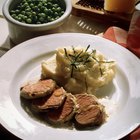
How to Cook Marinated Pork Loin From a ...

The Best Way to Prepare Bison Sirloin
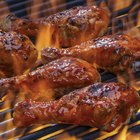
How to Cook Chicken in a Crockpot & ...

How to Cook Japanese Teppanyaki
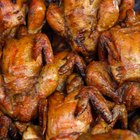
Rotisserie Cooking Times

How to Cook a Frozen Burger in a Skillet
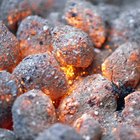
How to Cook Quail on a Grill

How to Cook Boneless Country Spare Ribs

How to Cook Trevally

How to Cook Pork Chops on an Electric ...
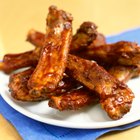
How to Bake Spare Ribs Before BBQing
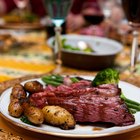
How to Cook a Roast Beef on a ...
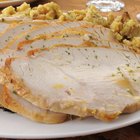
How to Reheat Sliced Turkey
How to Cook Grouper in the Oven

How to Roast Cornish Hens With Potatoes ...

How to Cook Chicken Bratwurst
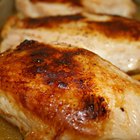
How to Make Pollo Asado-Marinated ...
How to Use a Hob Steamer

How to Make a Juicy Pork Tenderloin
References
Resources
Tips
- Convection ovens differ from conventional or radiant ovens in that a fan continuously spins to evenly distribute heat, resulting in food that has better texture and flavor.
- Read the owner’s manual for your convection oven and familiarize yourself with the controls.
- In general, convert a temperature recommended for a conventional by lowering the temperature on your convection oven by 25 degrees.
- Experiment with your convection oven and build upon your successes, just as you’ve done with your conventional and microwave ovens.
Writer Bio
Mary Wroblewski earned a master'sdegree with high honors in communications and has worked as areporter and editor in two Chicago newsrooms. She launched her ownsmall business, which specialized in assisting small business ownerswith “all things marketing” – from drafting a marketing planand writing website copy to crafting media plans and developing emailcampaigns. Mary writes extensively about small business issues, andespecially “all things marketing.”
Photo Credits
Goodshoot/Goodshoot/Getty Images